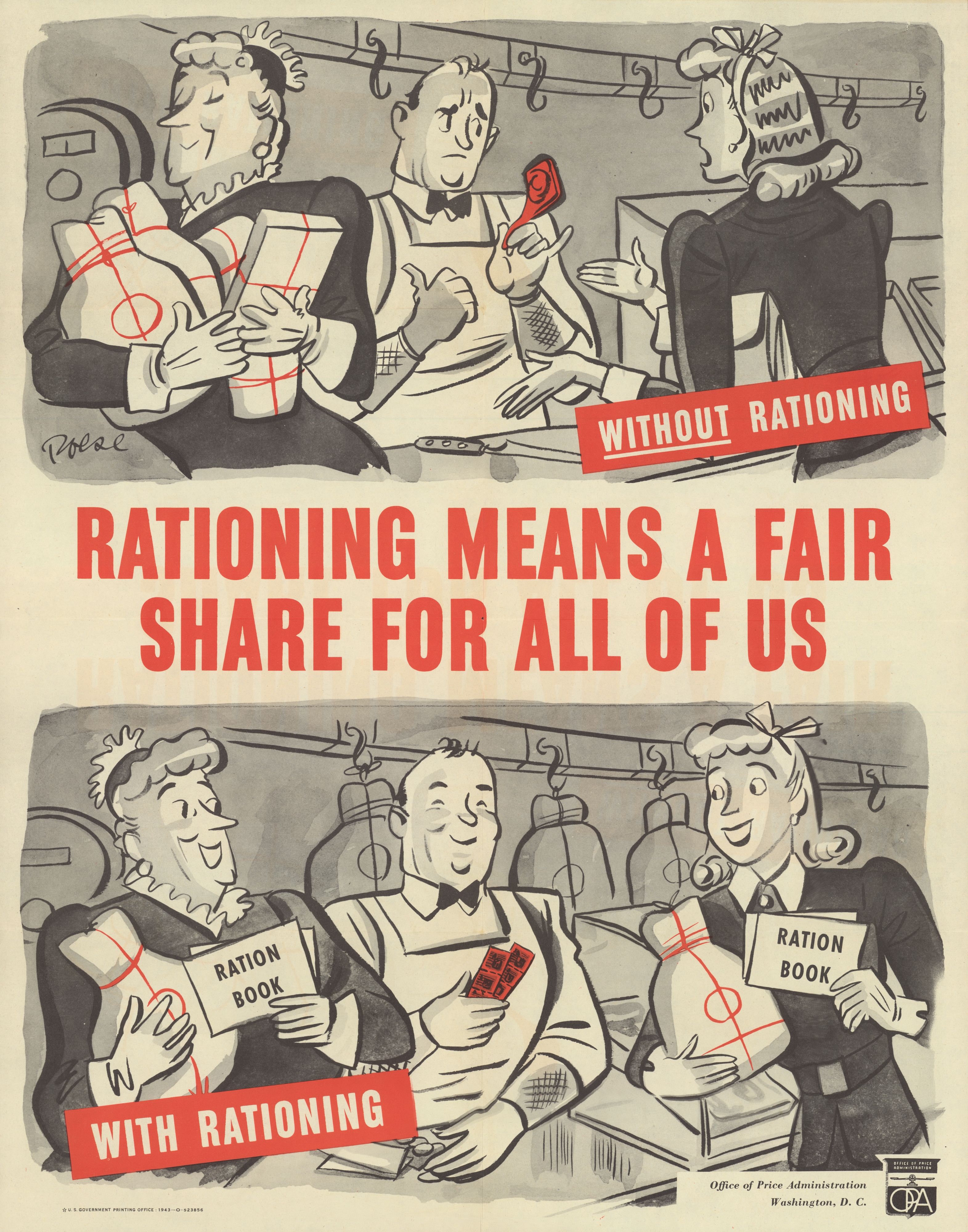Florida During World War II
Lesson Plans
World War II Homefront: Rationing
4th Grade Lesson Plan

Rationing Means a Fair Share for All of Us - Poster, 1943.
Overview
During World War II, shortages of a variety of civilian goods became commonplace. To ensure fair distribution and that vital materials would be conserved for military use, the federal government implemented a rationing policy on a wide variety of products. Gasoline, rubber, bicycles, shoes, sugar, fruits and vegetables, fats and oils, cheese, coffee, butter, meats, fish, certain canned goods, and even dried peas and beans were among the many products rationed for all or part of the war. Many other non-rationed items were in chronically short supply and virtually impossible to obtain.
To enforce the system, the Office of Price Administration issued ration books for gasoline and foodstuffs, which civilians had to present and turn over the required ration coupons before they were allowed to purchase the rationed item.
Objective
Students will analyze a primary source document about rationing during World War II.
Grade
4
Next Generation Sunshine State Standards
SS.4.A.1.1: Analyze primary and secondary resources to identify significant individuals and events throughout Florida history.
SS.4.A.7.3: Identify Florida’s role in World War II.
Examples may include, but are not limited to, warfare near Florida’s shores and training bases in Florida (Miami, Tampa, Tallahassee, etc.), spying near the coast, Mosquito Fleet.
Materials Needed
- Poster: "Rationing Means a Fair Share for All of Us," 1943.
- "Rationing Means a Fair Share for All of Us" poster analysis worksheet (pdf).
Procedure
Part I: Introducing Content
Activate prior knowledge. Review with students what they already know about the homefront during World War II. Some questions you might ask:
- What is rationing?
- How did rationing affect people in their daily lives?
Part II: Document Analysis
Students will analyze the poster using the poster analysis worksheet.
Part III: Document Synthesis
Conduct an in-class discussion of what students learned during the document analysis. Questions for students might include the following:
- Summarize this poster in one sentence.
- Who do you think is the intended audience for the poster?
- What does the government hope the audience will do? What government purpose is served by the poster?
- What did you find out from this poster that you might not learn anywhere else?
- The most effective posters use elements that are attention getting, simple and direct. Is this an effective poster?
Extension Activity
Students can further explore the documents in the Primary Source Set: Rationing, Victory Gardens and Scrap Drives During WWII.

 Listen: The Blues Program
Listen: The Blues Program